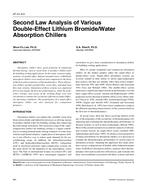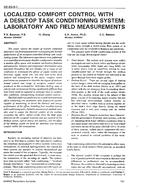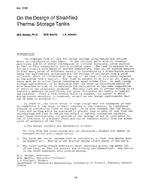The importance of comfort problems in passive buildings is underlined by the growing feeling that total energy analysis for buildings should take into account occupants’ response to their environment. Occupant comfort issues, i .e ., visual comfort, thermal comfort, and air quality, are discussed in general terms. Particular attention is given to thermal comfort, which is shown to have a significant impact on the occupants’ response to thermal nonuniformities within buildings, particularly those using passive strategies. A brief review of the available results on comfort is given and the program modeling the human thermal response to the environment is described. This detailed, state-of-the-art model is added to the simulation program BLAST and preliminary results of comfort levels are outlined. The example of daylit office buildings is taken to show the interaction between thermal comfort and building energy analysis.
Units: Dual
Citation: ASHRAE Transactions, 1985, vol. 91, pt. 2A, Honolulu, HI
Product Details
- Published:
- 1985
- Number of Pages:
- 13
- File Size:
- 1 file , 1.1 MB
- Product Code(s):
- D-HI-85-2890


